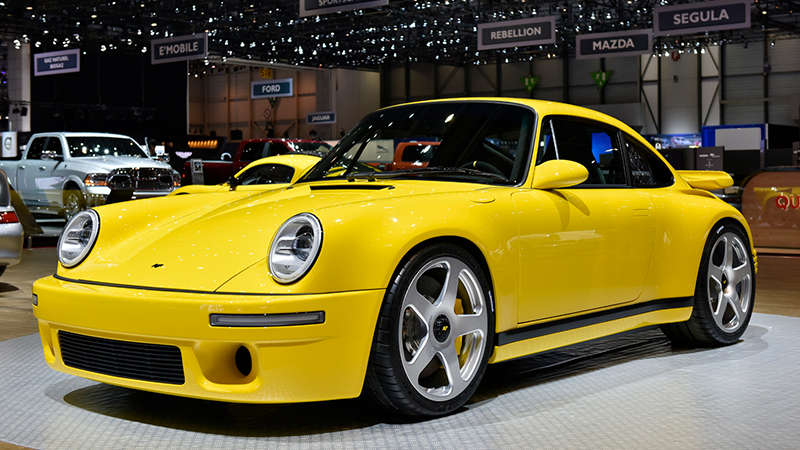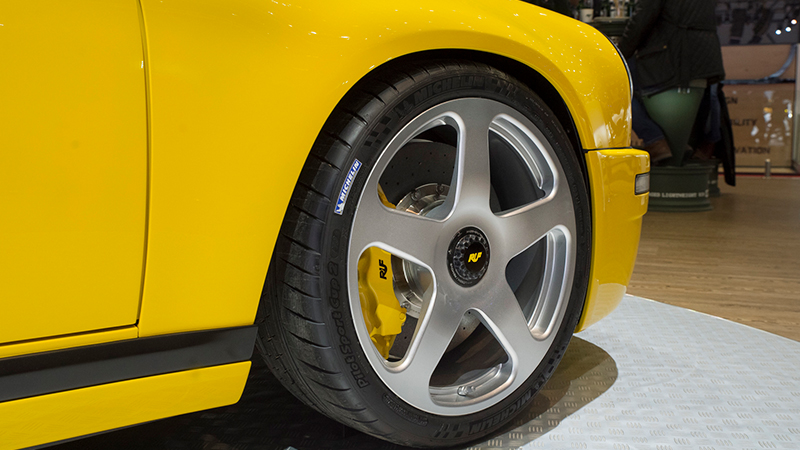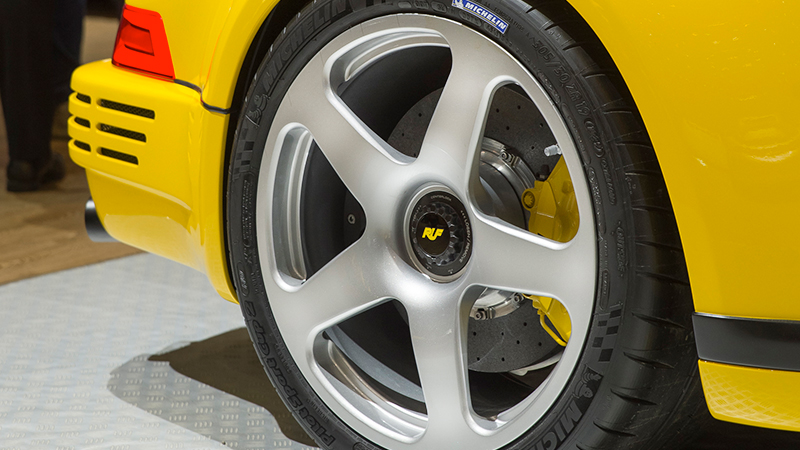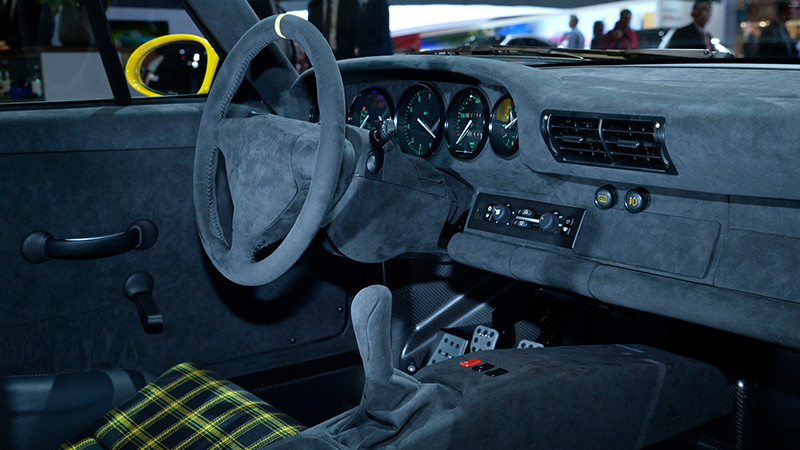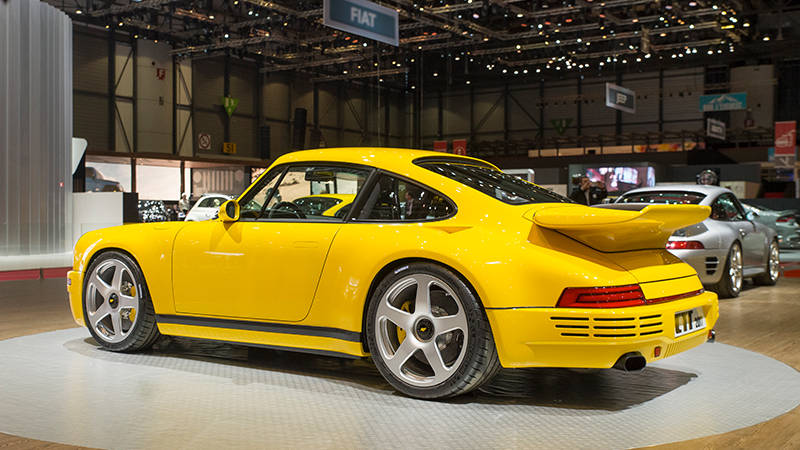New Chapter in a David and Goliath Story.
Entering its fourth generation, the latest high-performance RUF supercar pays homage to the 1987 CTR Yellow Bird in both form and function. A weight-to-power ratio of only 3.46 lbs per horsepower, a first-ever rear-wheel drive bespoke carbon fiber monocoque chassis and an incredibly powerful engine are only some of the ingredients that make the latest CTR such a compelling work of automotive art.
Design inspiration comes directly from the 1987 Yellow Bird’s focus on aerodynamic efficiency. The silhouette, narrow body, rear air inlets and fascias are all direct nods to company heritage. The body, now formed in carbon, calls back to the original car’s flushed look. Center-locking 19-inch forged alloy wheels complete the design wrapped in tires measuring 245/35ZR19 in the front and 305/30ZR19 in the rear.
Powerful, Traditional and Thoroughly Modern
Technological sophistication starts with the skin, which is made completely of carbon fibre. For the first time, the chassis beneath that surface – also made of carbon fibre – is a proprietary RUF design. The front crash structure is built with lightweight, steel as is the integrated roll cage that are both designed to maximize occupant safety. In total, the extensive use of modern materials allows for an extremely light dry weight of 1,200 kg (2,640 lbs).
Like most RUF works of art, the CTR uses a rear-engine powertrain layout. The 3.6-litre twin-turbo flat-six is built by RUF and inspired by the design of the engine in the original Yellow Bird. To that end, it uses a dry-sump lubrication system to provide constant oil supply and pressure during extreme cornering. Total output is 522 kw (710 PS) at 6,750 RPM and 880 Nm (649 lb-ft) at 2,750 RPM, allowing acceleration from 0-100 km/h (62 mph) under 3.5 seconds and 0-200 km/h (125 mph) under nine seconds. Top speed is 360 km/h (225 mph). In order to truly pay tribute to the Yellow Bird, the latest CTR will be available exclusively with a newly-developed seven-speed manual transmission that sends power to the rear wheels through a limited-slip differential.
“We began development on the new CTR five years ago with the goal of creating a thrilling, analog driving experience that combines an amazing power-to-weight ratio, manual transmission and modern racing technology,” said Estonia Ruf.
Ensuring excellent handling characteristics, the CTR Anniversary uses double-wishbone suspension arms in a pushrod configuration for both the front and rear axles. Internally vented and perforated carbon ceramic brake discs (380 mm front, 350 mm rear) clamped by six-piston fixed calipers (front) and four-piston calipers (rear) offer maximum stopping power and enduring fade resistance.
Minimalist Interior as a Mark of Analog Design
A minimalist two-seat interior designed with lightweight materials is a further acknowledgement of the CTR’s analog philosophy.
Alcantara is the upholstery of choice both for its aesthetics and weight saving properties that, in combination with leather and carbon fiber, give the cockpit a balance between modern and retro design. The seats are made of carbon fiber, and the pedals from aluminum. A three-spoke steering wheel is a further nod to the car’s racing pedigree, as are the analog dial-type gauges in a green typeface.
Series production is scheduled to begin by 2018 at RUF’s Pfaffenhausen, Germany, facility. The limited run will include 50 units not including the prototype unveiled during the 2017 Geneva Motor Show.
A Nickname Turned Legend
The RUF CTR debuted in 1987. Capable of incredible speed, the 469-bhp twin-turbo CTR reached 342 km/h (213 mph) during testing on the Nardo Ring, a shocking speed for its time that is still impressive to this day. It was in the same year that RUF gained approval from the U.S. National Highway Transportation Safety Administration and Environmental Protection Agency to sell its cars in America. Shortly thereafter, Alois Ruf brought the car to Road & Track’s “World’s Fastest Car” competition at Volkswagen’s Ehra-Lessien test track in Germany.
The CTR was one of nine cars in attendance including a Ferrari Testarossa, a Lamborghini Countach 5000S and a Porsche 959.
The photographers from Road & Track noticed how the CTR’s bright paintwork stood out against the coincidentally dull weather, and gave it the nickname “Yellow Bird.” What happened next would contribute to making that name stick forever.

